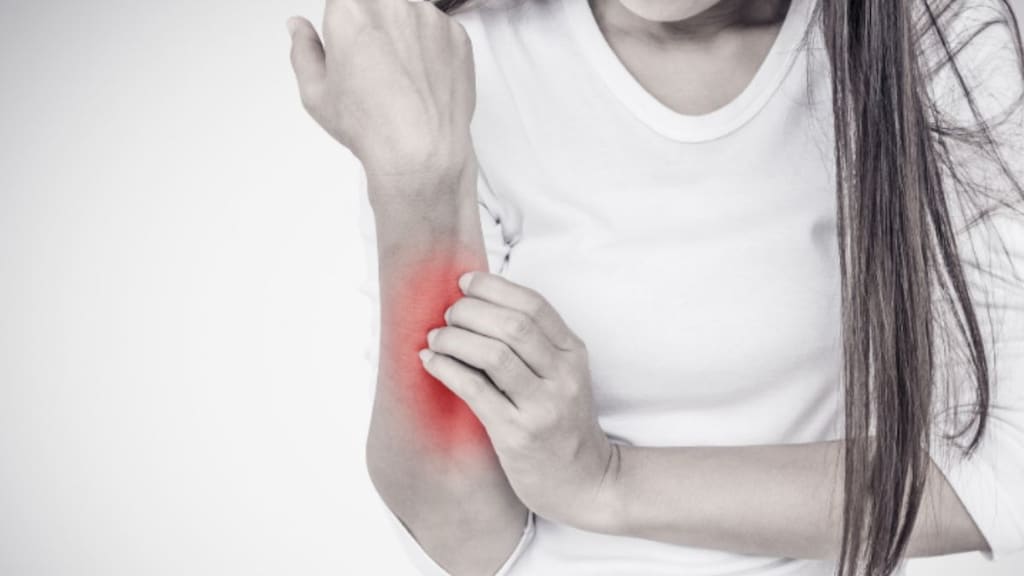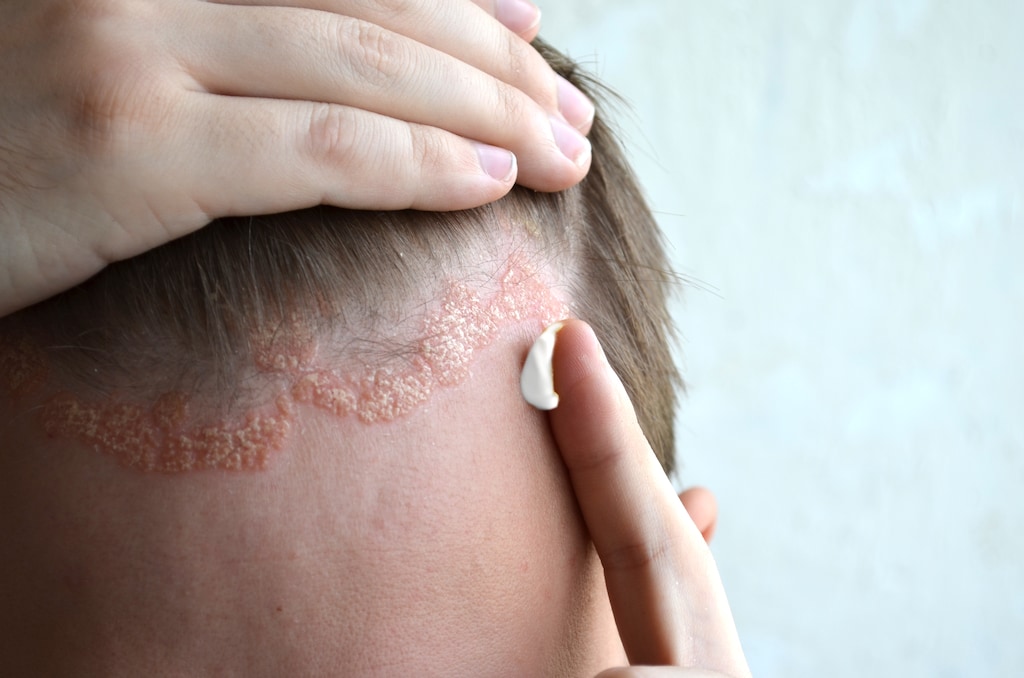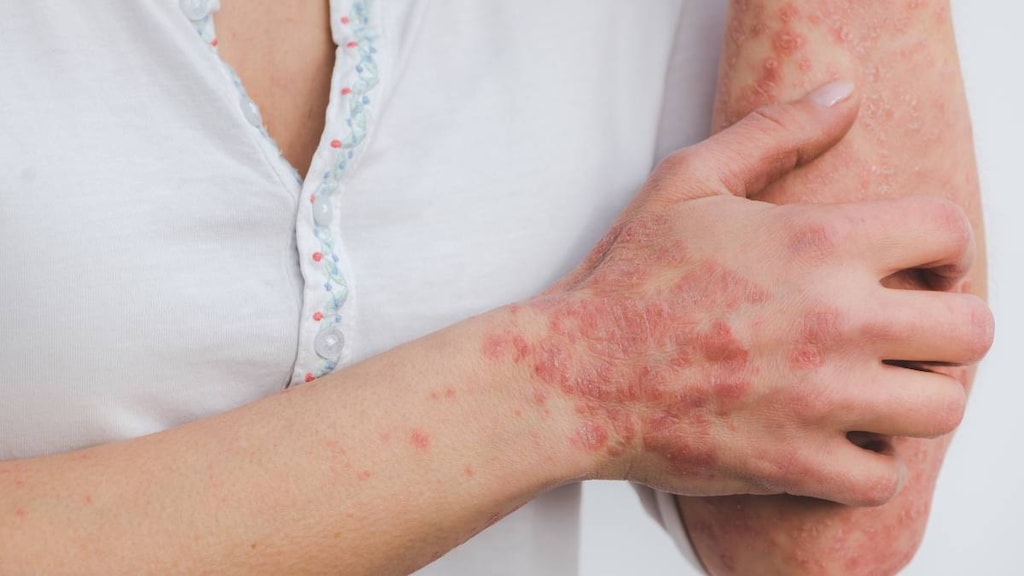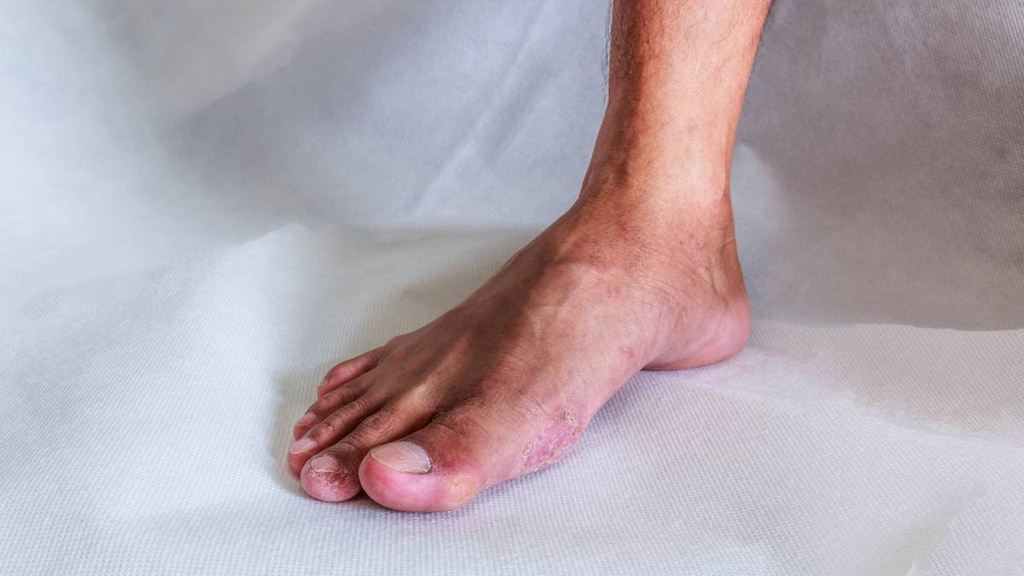Nail psoriasis or a fungal infection - how do they compare?
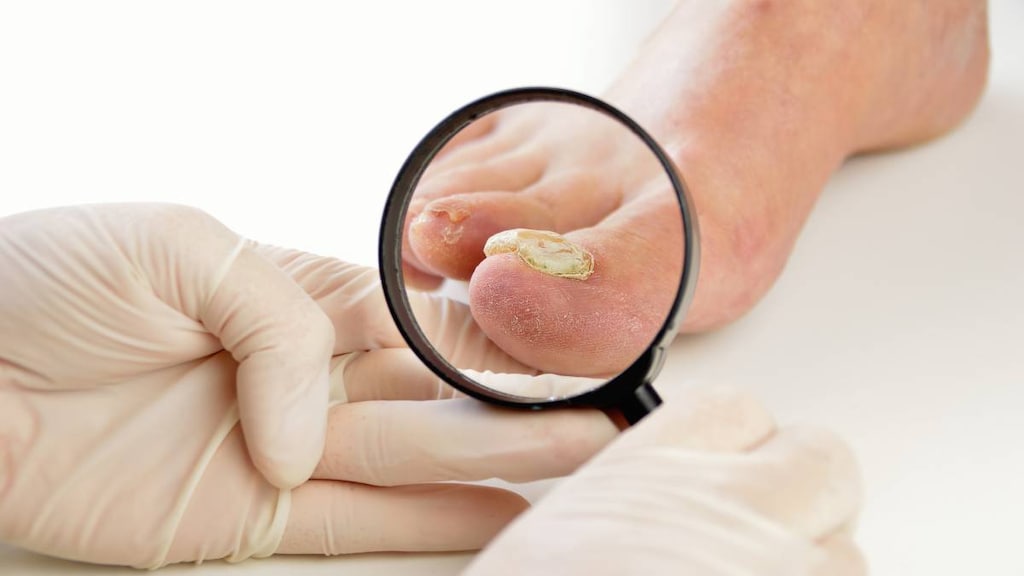
If you’ve got toenails or fingernails that have changed in appearance, you may be wondering what the culprit is. It may be difficult to tell what you’re dealing with as some nail conditions appear similar to others.
Nail psoriasis and nail fungal infections (onychomycosis) are two conditions that are sometimes confused. It’s important to get a correct diagnosis, however, as the treatment for these two conditions is different.
What is nail psoriasis and who does it affect?
Nail psoriasis or psoriatic nail dystrophy is a form of psoriasis that affects the nails. Psoriasis is a chronic, immune-mediated skin condition that causes skin-cell growth to speed up and the cells to pile up on the surface of the skin. It affects about 2-3 percent of people worldwide.
Nail psoriasis is not infectious and typically occurs in about 50 percent of people who have psoriasis elsewhere on their body, often developing some years after psoriasis has appeared on the skin. Although, in some cases nail psoriasis can occur in people with no other signs of psoriasis. Nail psoriasis is a risk factor for psoriatic arthritis.
What is a nail fungal infection and who does it affect?
Onychomycosis is a chronic infection of a toenail or fingernail caused by a fungus. Usually nail fungal infections are caused by dermatophytes, but molds and yeasts can also infect nails. A nail fungal infection caused by dermatophyte is called tinea unguium, while onychomycosis is a broader term which is now used to describe both dermatophyte and non-dermatophyte nail infections.
Nail fungal infections are more common than nail psoriasis, with cases occurring in about 10 percent of the general population. They are also more common in older people - occurring in 20 percent of people over 60 years of age and 50 percent of people over 70 years age.
Nail fungal infections are more common in older adults because as we age our nails become more dry and brittle. Poorer circulation and a less effective immune system may also play a role. People are also more at risk of developing a nail fungal infection if they have injured the nail, or have a condition such as diabetes or nail psoriasis.
Fungal infections can be picked up from objects, other people, or spread from other sites on your own body. For example, athlete’s foot (tinea pedis), which is a fungal infection commonly found between the toes, can spread to infect nails.
When we compare the symptoms of nail psoriasis and a fungal infection it’s easy to see how the two can be confused
Nail psoriasis symptoms |
Nail fungal infection symptoms |
|
|
|
|
|
|
|
|
|
|
|
|
|
|
|
|
|
|
|
|
|
|
|
|
|
|
|
There are also different subtypes of nail fungal infection and each one can look a bit different
There are several nail fungal infection subtypes and each subtype has a different appearance. Subtypes vary depending not just based on the appearance of the nail, but also on the infecting fungus and where in the nail plate the infection begins. The different subtypes are:
- Distal or lateral subungual onychomycosis. This is the most common subtype of nail fungal infection and most often affects the toenail on the big toe. It causes yellow, brown or white discoloration of the nail. It begins around the edges or sides of the nail and eventually spreads over the entire nail.
- Proximal subungual onychomycosis. This subtype of nail infection occurs when the skin that borders the bottom of the nail by the cuticle - the proximal nail fold - becomes infected. The infection then spreads out from the proximal nail fold. In the US, T. rubrum is the main fungus that causes this subtype of infection.
- Superficial onychomycosis. Superficial onychomycosis begins when the superficial layers of the nail plate become infected, which often causes white lesions to appear on the nail. As the infection progresses, the infection spreads further into the nail. T. mentagrophytes most commonly cause this subtype of infection.
- Endonyx onychomycosis. Endonyx onychomycosis affects the interior of the nail plate only. The infection does not invade the bed under the nail plate.
- Totally dystrophic onychomycosis. In this subtype the nail bed becomes thickened and raised with a lot of nail debris accumulating.
- Yeast onychomycosis. This subtype more commonly affects fingernails than toenails and it is typically caused by the yeast Candida. It may indicate the presence of an immunodeficiency disorder.
- Fungal melanonychia. This is a rare subtype of nail fungal infections caused by molds that produce melanin, including Scytalidium, Alternaria, and Exophiala. Fungal melanonychia causes the nail to become discolored and turn a brown or black color. It may appear similar to a melanoma developing under the nail.
Tips to help nail psoriasis
See your healthcare provider to find out what treatment is right for you. They may prescribe medications, phototherapy or steroid injections to help. You can also follow these simple steps to help prevent damage to the affected nails:
- Keep your nails short
- Wear gloves to protect fingernails when required
- Leave your cuticles alone - don’t clip them or push them back
- Don’t dig under loose nails
- Keep your nails moisturized
Tips to help a nail fungal infection
See your healthcare provider to find out what treatment is right for you. Oral terbinafine is a preferred treatment option because it works more quickly and is more effective than topical options. In severe cases, however, removal or debridement of the affected nail may be necessary.
Topical options containing ciclopirox 8%, efinaconazole 10% and tavaborole 5% can be used to treat mild to moderate infections as well. Topical treatments are often less effective, but side effects and potential drug interactions are less of a problem too.
In addition to medications, you can also help improve your treatment response by keeping the affected nail trimmed short.
Nail fungus can come back after treatment. To help prevent fungal infections:
- Wash your hand and feet, especially after touching any infected nails
- Moisturize hands and feet after washing
- Keep your nails short
- Trim nails straight across and file any sharp edges
- Disinfect nail clippers after use
- Avoid walking barefoot in public spaces, particularly in damp areas such as swimming pools and communal showers
- Use disinfectant on socks and shoes if you’ve had an infection
- Look after your feet. Take care to keep them clean and dry, especially if you have diabetes, psoriasis or an injury to the nail or nearby skin
- Avoid nail polish and artificial nails
- If you get your nails done, take care to select a nail salon that sterilizes their equipment between customers
The best way to tell the difference between nail psoriasis and a fungal infection
Nails psoriasis and nail fungal infections can be difficult to tell apart. The best way to tell if you’re dealing with psoriasis, a fungal infection, or both is to visit your healthcare provider. Your healthcare professional can take a medical history, look at the appearance of your nails and, if required, take a nail clipping to screen for fungus.
Article references
- National Psoriasis Foundation. Hands, Feet & Nails. September 17, 2020. Available at: https://www.psoriasis.org/hands-feet-nails/. [Accessed December 1, 2021].
- Frazier W, Santiago-Delgado ZM, Stupka II KC. Onychomycosis: Rapid Evidence Review. Am Fam Physician. 2021 Oct ;104(4):359-367.
- Westerberg DP, Voyack MJ. Onychomycosis: Current Trends in Diagnosis and Treatment. Am Fam Physician. 2013 Dec 1;88(11):762-770.
- HealthLinkBC. Non-Surgical Nail Removal for Fungal Nail Infections. July 2, 2020. Available at: https://www.healthlinkbc.ca/health-topics/hw268824. [Accessed December 01, 2021].
- Mayo Clinic. Nail fungus. Available at: https://www.mayoclinic.org/diseases-conditions/nail-fungus/symptoms-causes/syc-20353294. [Accessed December 01, 2021].
- Elewski BE. Onychomycosis: pathogenesis, diagnosis, and management. Clin Microbiol Rev. 1998;11(3):415-429. doi:10.1128/CMR.11.3.415.
- Centers for Disease Control and Prevention (CDC). Fungal Diseases. Nail Infections. May 27, 2020. Available at: https://www.cdc.gov/fungal/nail-infections.html. [Accessed December 01, 2021].
- American Academy of Dermatology Association. WHAT IS NAIL PSORIASIS, AND HOW CAN I TREAT IT? Available at: https://www.aad.org/public/diseases/psoriasis/treatment/genitals/nails. [Accessed December 1, 2021].
